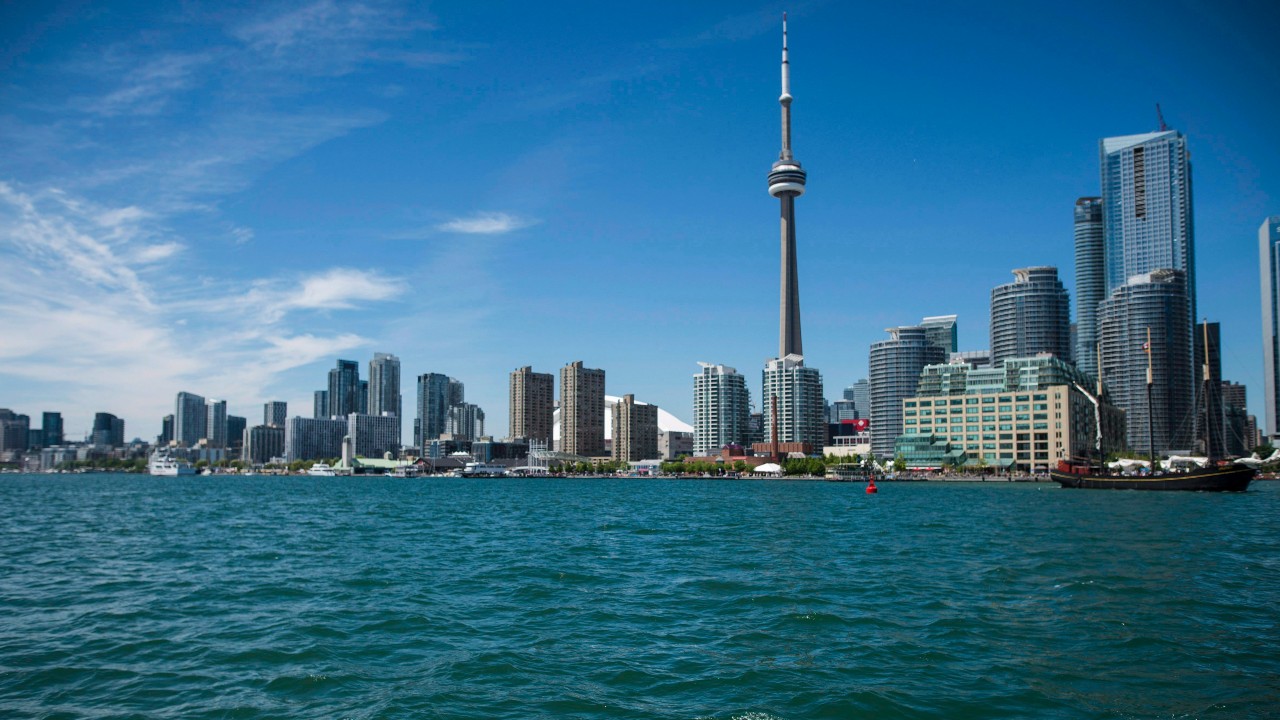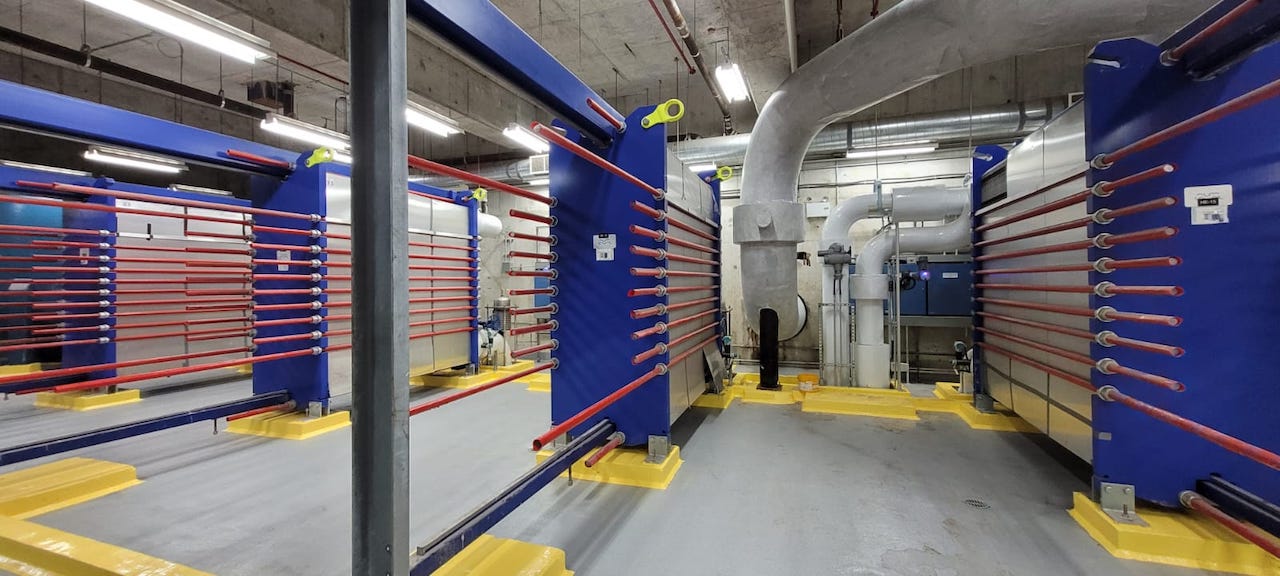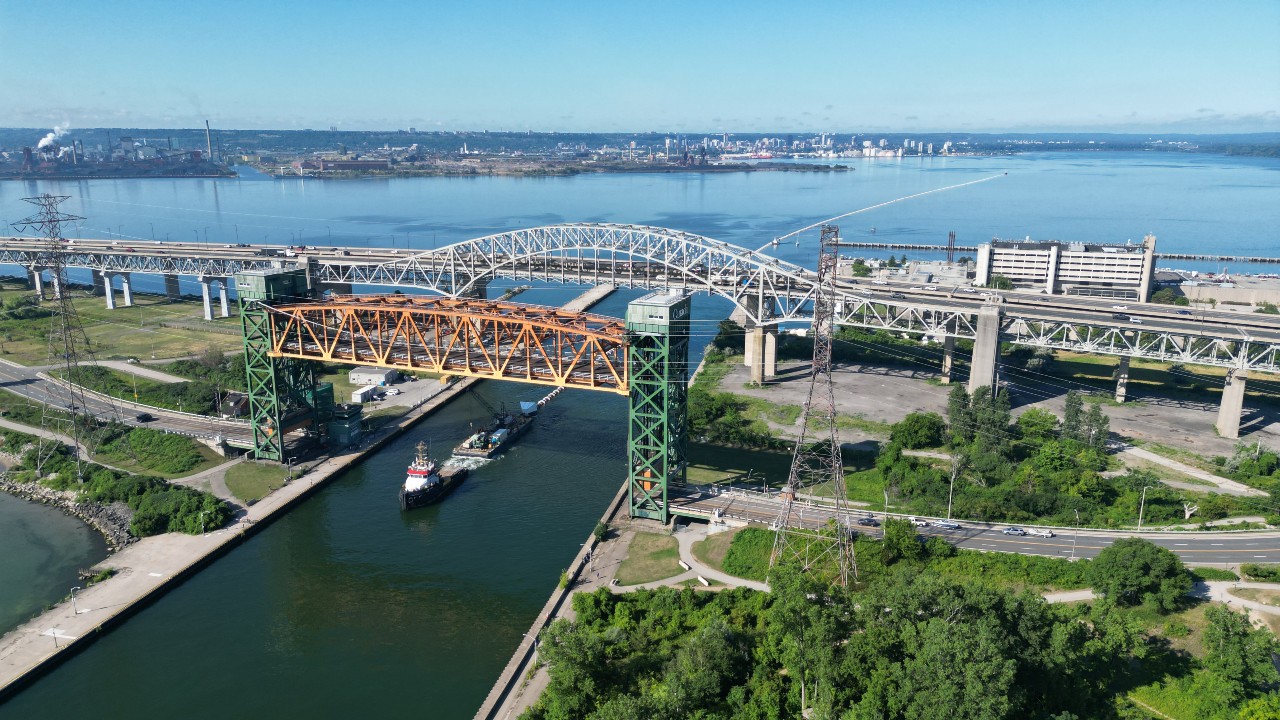How Toronto is using Lake Ontario to cool its buildings
The city is home to the world’s largest Deep Lake Water Cooling system, and there’s an expansion on the way.

Extending about five km from Toronto’s downtown core, three pipes lay at the bottom of Lake Ontario, pulling in cold water. This water is then used to cool buildings as part of the world’s largest Deep Lake Water Cooling (DLWC) system.
Launched in 2004, DLWC now provides air conditioning to about 95 buildings in downtown Toronto, including hospitals, commercial centres, and government and residential buildings. Since its inception, it’s been held up as an option for sustainable indoor cooling, especially as climate change leads to hotter summers and more extreme heat events.
The program has been so successful that Enwave Energy Corporation, the company that owns and operates DLWC, is currently expanding the system. The expansion will increase capacity by about 60 per cent and align with the city’s TransformTO project, which aims to reduce Toronto’s emissions to net zero by 2040.
Here’s what you need to know.
What is Deep Lake Water Cooling, and how does it work?
The system starts 83 metres beneath the surface of Lake Ontario. Three massive pipes, which are positioned along the natural slope of the lake, pump water to the city-owned filtration plant on Toronto Island.
The water is then treated for use as drinking water and transported to the John Street Pumping Station, just south of Rogers Centre.
There, 36 large heat exchangers transfer thermal energy between systems. The treated lake water is used to cool the water in Enwave’s closed-loop pipe system, and then distributed around Toronto as drinking water that comes out of the tap.
After that, the chilled water in the closed Enwave loop travels through a series of pipes, cooling buildings around Toronto through on-site heat exchangers and slowly warming up as it goes.
Finally, the water in the closed loop returns to the John Street location, and is once again cooled by new water coming from the lake. And the cycle continues.

What buildings use DLWC?
Carson Gemmill, the VP of Solutions and Innovation at Enwave, notes that “most if not all” government buildings, both provincial and municipal, use DLWC to stay cool — including Queen’s Park. Many of the major hospitals are also customers, with University Health Network (UHN) facilities Toronto General, Mount Sinai, and Princess Margaret Cancer Centre among them.
Several large downtown commercial buildings are connected to the system, and the number of residential buildings using the technology — particularly those in development now — is growing.
“With the densification of the downtown core and the buildup of condo towers in the proximity of our system, we’ve started to connect to a lot more [residential buildings],” says Gemmill, who points to The Well, a new Wellington St. development that will use DLWC technology.
.jpg)
Why Toronto?
The city is actually uniquely positioned for a DLWC system like this. In order for DLWC to work, the water needs to be exactly four degrees celsius — that’s when water is at its densest.
Luckily for Toronto, there’s a volume of water in Lake Ontario that’s consistently four degrees, year-round. And it’s only about five km away from Toronto’s shore.
“In other lakes, it might be double or triple that distance, which makes [DLWC] less economically viable,” Gemmill explains. “There are obviously many other major cities next to Great Lakes that could look at this kind of technology, but … it can be challenging in other places to hit that strata of water.”
Enwave’s relationship to the city, along with the company’s access to city facilities and infrastructure, is also fundamental to developing a DLWC system.
“The fact that [the city] already had a water treatment plant on Toronto Island that led to a pumping station right at the core of the city … everything was very well situated to enable district energy (low-carbon thermal energy) in the densest part of the city,” explains Gemmill.

What are the expansion plans?
In 2019, Enwave and the City of Toronto announced a $100-million expansion of the system, with up to $10 million being provided by the federal government. The expansion will add a fourth bottom-of-the-lake pipe to the system, which will add 60 per cent more capacity — or about 40 to 50 additional buildings.
The project is currently under construction. Gemmill notes the expansion could be ready to go by mid 2024.
When the expanded system is complete, a portion of “raw water” will bypass the municipal water supply, pass through heat exchangers at both the John Street Pumping Station and a cooling plant at Simcoe St., and then get discharged back into the harbour via a connection to the city’s existing stormwater system.

What are the pros of DLWC?
The biggest benefit of a DLWC system is its impact on energy consumption. Traditionally, large buildings like office towers and hospitals keep cool using HVAC systems. In an industrial HVAC system, massive chillers — often in conjunction with rooftop cooling towers — and chemical refrigerants are used to generate cold water that helps remove unwanted heat.
Since DLWC replaces that on-site infrastructure with already-cold lake water, it saves a ton of electricity.
“You’ve already got water that’s cold enough [from the lake], so really the only energy used is the electrical energy to pump the water and circulate it,” explains Danny Harvey, a professor in the Department of Geography at the University of Toronto.
Enwave says that its system uses up to 80 per cent less energy than a chiller, and saves 90,000 mega-watt hours of electricity use every year. (For context, individual Ontarians consume an average of 9.6 mega-watt hours of electricity each year.) According to the same reporting, DLWC also reduces annual greenhouse gas emissions by nearly 40,000 metric tons.
But Harvey notes that as the country moves away from fossil fuels, saving electricity won’t be just about reducing carbon emissions.
“It’ll be about spreading carbon-free electricity around to make it go further and using the electricity more efficiently,” says Harvey.
As in, using less electricity to cool buildings would mean there’s more available for charging electric vehicles, for example.
And despite needing lots of lake water to operate, DLWC saves an estimated 220 million gallons of water annually — as much as 350 Olympic-sized swimming pools.
Are there cons?
Building a DLWC system has a much higher up-front cost than other traditional cooling methods. The current system cost about $170 million back in 2004. But, according to Gemmill, the operating costs are quite low and the system will last longer: Traditional chillers have a lifespan of about 20 to 25 years while Enwave’s heat exchangers should last about 50.
Experts have also previously raised concerns relevant to one aspect of the expansion — once it’s complete, as noted above, a portion of the water collected by the intake pipes will be used for energy transfer, and then discharged back into the harbour.
According to Harvey, water taken from deeper in the lake is more nutrient-dense, so releasing that water too close to the lake’s surface creates the potential for issues such as algae blooms.
However, Gemmill notes that this possibility was explored in Enwave and the City of Toronto’s joint environmental assessment, which found “no significant adverse impacts to Lake Ontario.”
“In this instance the deep-lake discharge does not worsen the (water) quality at the surface receiving location,” says Gemmill, who adds that the discharge might actually help improve the water quality in the harbour.
Harvey also cautions against using DLWC as a cure-all for Toronto’s cooling needs. As the climate gets warmer, and extreme-heat events more common, there is a demand for more air conditioning solutions as well as a need for these options to be sustainable and affordable.
While DLWC is definitely a part of mitigating heat in Toronto, Harvey says that designing buildings to need less cooling needs to be considered as well.
“When they were first considering [DLWC] 20 years ago, one of the concerns from environmental groups was that it would be so cheap (to operate) that no one will pay attention to good building design in terms of reducing the need for cooling in the first place,” says Harvey. “We need good design, which means minimizing the [amount of reflective and heat-trapping materials], especially facing the afternoon sun, and allowing for passive ventilation in buildings.”
This is an updated version of an article originally published in 2022.
Code and markup by Chris Dinn. ©Torontoverse, 2023